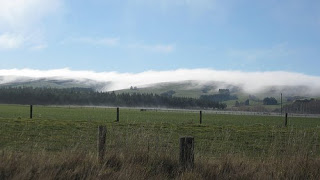 Yesterday, I had a serendipitous moment that happens regularly when you spend a lot of time online. I attended a meeting in Second Life in which John Miller (SL: JS Vavoom) gave an account of the work he is doing in Second Life with nursing students. This meeting was part of a series of talks called ISTE Eduverse Talks.
Yesterday, I had a serendipitous moment that happens regularly when you spend a lot of time online. I attended a meeting in Second Life in which John Miller (SL: JS Vavoom) gave an account of the work he is doing in Second Life with nursing students. This meeting was part of a series of talks called ISTE Eduverse Talks.What John had to say
The key things I picked up from John wasn't new to me but it did confirm what I have been learning about designing learning activities in Second Life.
- Learning activities in Second Life must be social - students learn better when they are with others - they will not learn by walking around empty buildings by themselves. We need to develop a sense of community for students - we can do that by emphasizing social aspects of Second Life. One thing John does is takes students to meet medical support groups in Second Life.
- Second Life gives us the opportunities to explore other ways of delivering information eg what's the point of delivering PowerPoint presentations in Second Life - we do enough of that in 'real life'.
- Why get our knickers in a twist about using Second Life for educational purposes - did you ever evaluate your use of overheads or PowerPoint for delivering information? Second Life is just another way of delivering education.
- Must make lessons fun in Second Life - be prepared to use games.
- Encourage students to personalize their avatars.
- Move away from using notecards to deliver information.
The main challenge to me is how to make the learning activities associated with the virtual birthing unit more social. At the moment the birth unit is a static resource with little or no interaction. Once we have the role-playing birth scenes up and running, I am sure we'll see increased student interaction.
I love the idea of taking students to meet maternity consumers. This is an idea I have been playing with over the last week. One thing I would like to do to invite the owners of the established commercial maternity units to talk to us and tell us a little more about why people role play pregnancy in SL. The other idea is to see how 'real' pregnant women use SL.
Do you have any other ideas about how we can socialize learning for students in Second Life?
Image: Doing chicken dance with a midwifery student in the TLC Maternity Unit


























